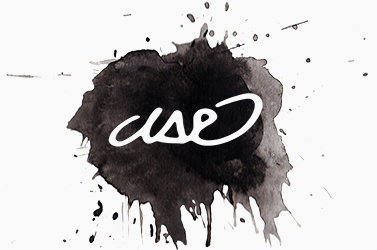Lung high blood pressure refers to hypertension in the arteries of the lungs, which can result in major problems if left without treatment. Sometimes, this condition proceeds to its end phase, requiring immediate clinical attention. Acknowledging the signs of end-stage lung high blood pressure is essential for early intervention and also making certain the best possible end result for affected people. This short article intends to offer an insightful overview of the symptoms connected with end-stage pulmonary high blood pressure and also the importance of looking for prompt therapy.
Understanding Pulmonary Hypertension
Pulmonary hypertension occurs when the capillary in the lungs become narrowed, obstructed, or destroyed, making it harder for blood to stream through the lungs. This leads to increased pressure on the best side of the heart as it functions harder to pump blood into the lungs. Gradually, the increased workload on the heart can result in heart failure, making lung hypertension a serious as well as possibly lethal condition.
Pulmonary high blood pressure can be categorized right into various groups based upon its underlying reason. These groups consist of pulmonary arterial hypertension (PAH), which is the most usual type, along with secondary lung hypertension triggered by other hidden conditions such as lung conditions, heart diseases, or embolism in the lungs.
No matter its cause, end-stage lung hypertension is defined by serious signs and symptoms that considerably influence an individual’s lifestyle.
Signs And Symptoms of End-Stage Pulmonary Hypertension
As lung high blood pressure proceeds to its end phase, numerous symptoms might end up being apparent. It is very important to keep in mind that these signs can vary among individuals, and also not all may experience the very same mix or extent of symptoms. Nevertheless, identifying these indicators is essential for looking for medical help promptly.
1. Serious Fatigue: Individuals with end-stage pulmonary hypertension often experience extreme exhaustion and absence of energy. Regular activities that were as soon as manageable might come to be exhausting, triggering a considerable decline in total endurance.
2. Shortness of Breath: Problem breathing, specifically throughout physical exertion or while lying level, is a typical signs and symptom of end-stage lung hypertension. The lowered capability to breathe properly can bring about a sense of suffocation or panic.
3. Breast Discomfort: Some individuals may experience breast discomfort or stress, especially throughout physical activity. This can be because of the heart’s struggle to pump blood via the tightened or blocked lung arteries.
4. Wooziness and Fainting: End-stage lung high blood pressure can trigger dizziness as well as impaired thinking, causing a higher danger of fainting episodes. These symptoms occur as a result of the decreased oxygen supply to the mind and the heart’s failure to supply sufficient blood flow.
5. Swelling: Edema, or swelling, is an usual signs and symptom in end-stage lung hypertension. It generally affects the legs, ankles, and feet, yet can additionally occur in the abdomen and other components of the body. Swelling happens as a result of liquid retention caused by the heart’s jeopardized pumping capability.
6. Blue Coloration: Cyanosis, identified by blue staining of the lips, fingers, toes, or even the skin, can happen in serious cases of end-stage pulmonary high blood pressure. This blue tint suggests a lack of enough oxygen in the blood.
Looking For Timely Therapy
Early intervention as well as suitable therapy are essential for taking care biodermalix of end-stage lung hypertension successfully. If you or a person you understand experiences signs and symptoms that might recommend end-stage lung high blood pressure, seeking clinical attention without delay is crucial.
A healthcare expert, such as a cardiologist or pulmonologist, will certainly examine the signs and symptoms, conduct diagnostic tests, and also figure out one of the most suitable therapy plan. Treatment alternatives may include drugs to boost heart and lung feature, oxygen therapy, lung hair transplant, or other interventions tailored to the individual’s particular requirements.
- Medication: Several drugs are available to manage the signs and symptoms and decrease the development of lung high blood pressure. These may include vasodilators, anticoagulants, diuretics, and also medicines targeting specific pathways associated with the illness.
- Oxygen Therapy: Supplemental oxygen can assist alleviate shortness of breath as well as improve oxygen levels in the blood.
- Lung Hair transplant: In serious instances where other treatment options have been exhausted, a lung transplant might be considered. This treatment intends to change the damaged lungs with healthy benefactor lungs to improve lung function.
It is important to keep in mind that the treatment technique will differ depending on the underlying root cause of pulmonary hypertension and the person’s overall health and wellness standing. Normal follow-ups and also close tracking by medical care experts are essential for handling and adjusting the treatment plan as required.
Final thought
End-stage lung hypertension is a serious problem that requires uromexil forte prompt medical interest. Identifying the symptoms, such as severe exhaustion, shortness of breath, upper body discomfort, wooziness, swelling, and blue coloration, empowers people to look for prompt therapy. With very early treatment and ideal healthcare, individuals with end-stage pulmonary hypertension can better handle their signs and symptoms and boost their general lifestyle. If you suspect you or someone you understand may have end-stage lung hypertension, it is crucial to speak with a medical professional immediately for a precise medical diagnosis and also customized therapy strategy.
Please note: The details supplied in this post is entirely for educational functions and must not be considered as medical guidance. Please speak with a medical care expert for personalized clinical support based upon your specific circumstances.
